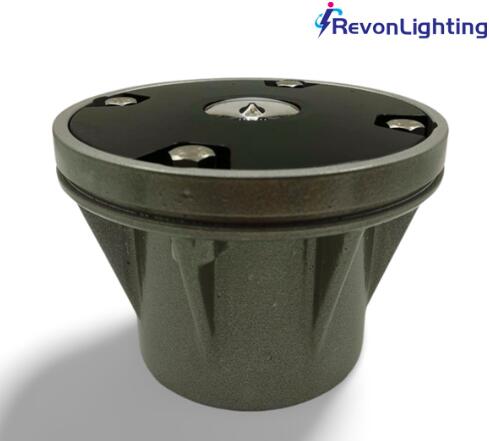Helipad Lighting Requirements: Essential Standards for Safe Vertical Operations
Safe helicopter operations depend heavily on proper illumination, particularly during nighttime or low-visibility conditions. Helipad lighting requirements establish critical guidelines to ensure pilots can clearly identify landing zones, assess approach angles, and avoid potential hazards. This article examines international standards, key lighting components, and emerging technologies in helipad lighting requirements, providing a comprehensive overview for aviation professionals and facility planners.
Why Helipad Lighting is Critical
Helicopter landings present unique challenges compared to fixed-wing aircraft:
Vertical descents require precise depth perception
Smaller landing zones demand higher visibility
Frequent operations in remote or urban environments necessitate reliable systems

Proper lighting reduces accident risks by:
Defining landing area boundaries
Indicating wind direction
Highlighting obstacles
Facilitating night and instrument approaches
International Standards for Helipad Lighting Requirements
1. ICAO (International Civil Aviation Organization)
The ICAO Annex 14 Volume II establishes baseline helipad lighting requirements for:
Perimeter lights (white or yellow)
Touchdown/positioning lights (green)
Floodlighting for general illumination
Obstruction lighting (red) for nearby hazards
2. FAA (Federal Aviation Administration)
FAC Advisory Circular 150/5390-2C specifies:
Minimum light intensity based on helipad classification
Color coding for hospital vs. non-hospital helipads
Required lighting configurations for visual vs. instrument approaches
3. EASA (European Union Aviation Safety Agency)
CS-ADR-DSN standards emphasize:
Energy efficiency requirements
Emergency power backup specifications
Maintenance accessibility guidelines
Essential Components of Helipad Lighting Systems
1. Perimeter Lighting
White or yellow lights marking landing area boundaries
Typically spaced ≤5 meters apart
Must be frangible (breakaway design for safety)
2. Touchdown Zone Lighting
Green lights forming an "H" or circle pattern
Minimum 5 lux illumination at center
Non-glare design to prevent pilot disorientation
3. Approach Path Lighting
Blue lights for visual approach guidance
Angled to indicate proper descent path
Required for instrument approaches
4. Wind Direction Indicators
Omnidirectional lighting for wind cones
PAPI (Precision Approach Path Indicator) systems for precision approaches
5. Obstruction Lighting
Red beacons on nearby structures
Synchronized flashing systems
Medium/high intensity options based on structure height
Hospital Helipad Lighting Special Requirements
Medical helipads have additional considerations:
Reduced intensity options near patient areas
EMI shielding for medical equipment compatibility
Dual-power systems for emergency operations
Distinctive blue cross lighting for identification
Emerging Technologies in Helipad Lighting
1. LED Advancements
50,000+ hour lifespan
Instant-on capability
Adjustable intensity controls
2. Solar-Powered Systems
Ideal for remote locations
Battery backup for continuous operation
Reduced infrastructure requirements
3. Smart Lighting Controls
Light sensors for automatic dimming
Remote monitoring capabilities
Predictive maintenance alerts
4. Wireless Synchronization
Eliminates complex wiring
Enables flexible configuration changes
Reduces installation time
Design Considerations for Effective Implementation
When planning helipad lighting requirements, engineers must consider:
1. Environmental Factors
Weather resistance (IP67 minimum)
Temperature tolerance (-40°C to +70°C)
Corrosion protection for coastal areas
2. Operational Requirements
24/7 readiness for emergency services
Compatibility with night vision goggles
Minimal light pollution for urban areas
3. Safety Features
Frangible mounting systems
Emergency power backup
Fail-safe circuit designs
Maintenance and Compliance
Regular maintenance ensures continued compliance with helipad lighting requirements:
Monthly intensity measurements
Quarterly cleaning and alignment checks
Annual full system inspections
Immediate repair of damaged components
Documentation should include:
As-built lighting diagrams
Maintenance logs
Compliance certification records
Future Trends in Helipad Lighting
The evolution of helipad lighting requirements includes:
Integration with UTM (Unmanned Traffic Management) systems
AI-powered predictive maintenance
Enhanced NVIS (Night Vision Imaging System) compatibility
Sustainable materials and energy solutions
Proper implementation of helipad lighting requirements is fundamental to aviation safety, particularly for emergency medical services, offshore operations, and urban air mobility. As technology advances, lighting systems are becoming more intelligent, efficient, and reliable. By adhering to international standards while incorporating innovative solutions, helipad operators can ensure optimal visibility and safety for all vertical flight operations.
The future of helipad lighting lies in smart, sustainable systems that adapt to evolving aviation needs while maintaining the highest safety standards. As urban air transportation grows, these requirements will play an increasingly vital role in the global aviation infrastructure.
